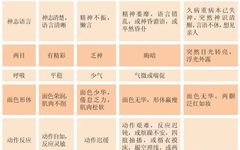Interpretation of Whole Body and Local Observation in TCMObservation (望诊) is a method used by physicians to visually examine changes in the patient’s entire body, local areas, and excretions to assess the condition of the illness. The content emphasized in TCM observation mainly involves observing the color, shape, and dynamics of the observed object. Whether it is the whole body or a local area, the tongue or fingerprints, the main aspects of observation are spirit (神), color (色), shape (形), and state (态). For secretions and excretions, the main aspects of observation are color (色), shape (形), quality (质), and quantity (量). Observation includes whole body observation, local observation, pediatric fingerprint observation, tongue observation, and observation of bodily secretions and excretions.
 Whole Body Observation
Whole Body Observation
 1. Principle and Significance of Observing SpiritSpirit (神) refers to the external manifestation of life activities in the human body, including consciousness, mental state, eye expression, and dynamics. Observing spirit involves examining whether the patient’s consciousness is clear, whether their mental state is normal, whether their thinking is disordered, whether their gaze is bright and lustrous, and whether their body movements are relaxed and vigorous. Observing spirit can reveal the presence or absence of vital energy (正气), the functional state of the organs, the severity of the illness, and the prognosis.
1. Principle and Significance of Observing SpiritSpirit (神) refers to the external manifestation of life activities in the human body, including consciousness, mental state, eye expression, and dynamics. Observing spirit involves examining whether the patient’s consciousness is clear, whether their mental state is normal, whether their thinking is disordered, whether their gaze is bright and lustrous, and whether their body movements are relaxed and vigorous. Observing spirit can reveal the presence or absence of vital energy (正气), the functional state of the organs, the severity of the illness, and the prognosis.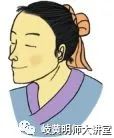 ● Gaining Spirit
● Gaining Spirit ● Losing Spirit2. Classification and Judgment of SpiritThe state of spirit is generally divided into gaining spirit, losing spirit, false spirit, diminished spirit, and mental abnormalities. The presence or absence and the vigor or weakness of spirit reflect the presence of disease and the degree of illness. As stated in the “Su Wen: Theory of Qi Transformation”: “Those with spirit thrive, those without spirit perish.” The differentiation of gaining spirit, diminished spirit, losing spirit, and false spirit is shown in the table below.
● Losing Spirit2. Classification and Judgment of SpiritThe state of spirit is generally divided into gaining spirit, losing spirit, false spirit, diminished spirit, and mental abnormalities. The presence or absence and the vigor or weakness of spirit reflect the presence of disease and the degree of illness. As stated in the “Su Wen: Theory of Qi Transformation”: “Those with spirit thrive, those without spirit perish.” The differentiation of gaining spirit, diminished spirit, losing spirit, and false spirit is shown in the table below.

In addition, the state of spirit also includes various manifestations of mental abnormalities, such as epilepsy, mania, and convulsions, which may present as dull expression, uncontrollable laughter or crying, and disordered responses. (2) Observing ColorObserving color (望色) focuses on the facial complexion, while also considering skin color, eye appearance, and nail color. Observing color includes two aspects: color (色) and luster (泽). The five colors are blue (青), red (赤), yellow (黄), white (白), and black (黑), known as the five-color diagnosis. Luster refers to the brightness of the skin, indicating changes in vitality.1. Principle and Significance of Observing ColorAs stated in the “Su Wen: Essentials of Pulse Diagnosis”: “The essence manifests in the five colors, which are the flowers of Qi.” The heart governs blood vessels, and its essence is reflected in the face. Therefore, the color and luster of the facial complexion reflect the vitality of the organs and the changes in the condition of the illness. The “Observation Diagnosis Follow the Classics” states: “Color is based on luster… Brightness and luster indicate Qi; the five colors are blue, red, yellow, white, and black. If there is Qi, there is color; if there is color, there must be Qi. In summary, the observation of Qi and color cannot be separated, and when analyzed separately, the differentiation of Qi and color cannot be confused.” If the color and luster are normal, it indicates that the organs and Qi-blood are not damaged, representing a normal person, or if there is illness, it is easily treatable with a better prognosis. If the color and luster are abnormal, it indicates that the organs and Qi-blood are damaged, suggesting the presence of illness, and the prognosis is poorer.2. Five Colors and Their Associated IllnessesThe five colors refer to blue, yellow, red, white, and black, which correspond to different organs and types of diseases. The method of diagnosing diseases based on the changes in the five colors of the patient’s facial complexion is known as the five-color diagnosis. (1) Blue color indicates cold syndrome, blood stasis syndrome, and pain syndrome.

● Blue color indicates cold syndrome, blood stasis, and pain syndrome. (2) Red color indicates heat syndrome.

● Red color is mostly associated with heat syndrome. (3) Yellow color indicates damp syndrome, deficiency syndrome, and jaundice.


● Yellow color is mostly associated with damp syndrome, deficiency syndrome, and jaundice. (4) White color indicates deficiency syndrome, cold syndrome, blood loss, and loss of Qi.


● White color indicates deficiency syndrome, cold syndrome, blood loss, and loss of Qi. (5) Black color indicates kidney deficiency, cold syndrome, water retention, and blood stasis.
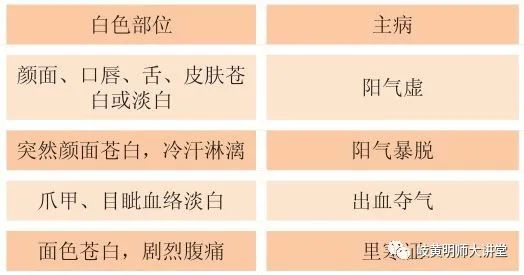

● Black color indicates deficiency syndrome, cold syndrome, water retention. (3) Observing Shape and StateObserving shape (望形态) involves diagnosing by observing the patient’s body shape and posture. The human body is centered around the five organs, with the skin, muscles, blood vessels, tendons, and bones surrounding the five organs. Therefore, observing the strength, weakness, fatness, and thinness of the body, as well as the dynamics and posture, can reveal the vitality of the organs and the changes in Yin and Yang. 1. Observing Body ShapeA strong body is characterized by large bones, a broad chest, full muscles, and moist skin, indicating solid organs and abundant Qi-blood. If ill, it often presents as a solid syndrome with a better prognosis.
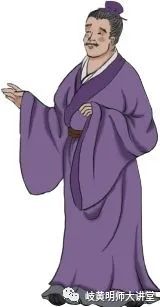
A weak body is characterized by small bones, a narrow chest, thin muscles, and dry skin, indicating weak internal organs and Qi-blood deficiency. If ill, it often presents as a deficiency syndrome with a poorer prognosis. An obese body is characterized by being overweight with little appetite, loose muscles, fatigue, and a pale complexion, indicating excess body mass with weak Qi, making it prone to dampness and phlegm, and susceptible to stroke and convulsions. A thin body is characterized by being thin with red cheeks and dry skin, often associated with Yin deficiency and excess fire, making it prone to lung tuberculosis; prolonged illness leading to bedridden status results in extreme thinness, indicating severe depletion of organ essence and Qi, which is critical. Local deformities include a “barrel chest” where the chest diameter is significantly increased, often due to phlegm accumulation obstructing the lungs or kidney Qi deficiency. A “flat chest” where the chest diameter is significantly narrowed, often due to lung and kidney Yin deficiency or Qi and Yin deficiency. “Abdominal distension” where the abdomen is enlarged, with visible veins and thin limbs, often due to liver stagnation or spleen deficiency leading to water retention and blood stasis. “Abdominal sinking” where the skin is wrinkled and the body is thin, often indicating severe depletion of organ essence and Qi. 2. Observing PosturePatients with Yang syndrome, heat syndrome, or solid syndrome tend to lie facing outward, able to turn easily, prefer to lie on their back with legs extended, uncovering themselves and avoiding heat. They may also exhibit discomfort when sitting or lying, feeling restless. Patients with Yin syndrome, cold syndrome, or deficiency syndrome tend to lie facing inward, curled up, feeling heavy and reluctant to turn, preferring to add clothing and seeking warmth. They may also prefer to lie down rather than sit, feeling dizzy when sitting or standing. When observing posture, attention should be paid to the following abnormal postures. Convulsions: Alternating stretching and contracting of limbs, continuous twitching, accompanied by lip tremors, eye twitching, and facial muscle contractions, seen in extreme heat generating wind, Yin deficiency causing wind movement, or blood deficiency generating wind. If a child has limb convulsions, with bluish-gray around the eyebrows and lips, and sudden cries, it indicates convulsion disease. If a newborn or someone with trauma has limb convulsions, with clenched mouth and arched back, it should be noted for tetanus. Tremors: Hand and foot tremors or head shaking, even to the point of being unable to hold objects or walk, often due to Yin and blood deficiency, leading to malnourishment of tendons, or excessive Yang causing wind, or Qi deficiency with phlegm turbidity. Rigidity: Limbs feel uncomfortable or tense, hindering bending and stretching, often due to external pathogens affecting the tendons or blood deficiency failing to nourish the liver. Hemiplegia: Sudden loss of consciousness with one side paralyzed or numbness, indicating stroke. Atrophy: Joint swelling and pain, difficulty bending and stretching, indicating bi syndrome. Weakness in limbs, difficulty moving, indicating atrophy syndrome. Chest and abdominal pain, curling up, tossing and groaning, frowning, indicating pain in the chest and abdomen. Delirium: Hands grasping at empty space, feeling for threads, looking straight ahead or upward, indicating critical condition.
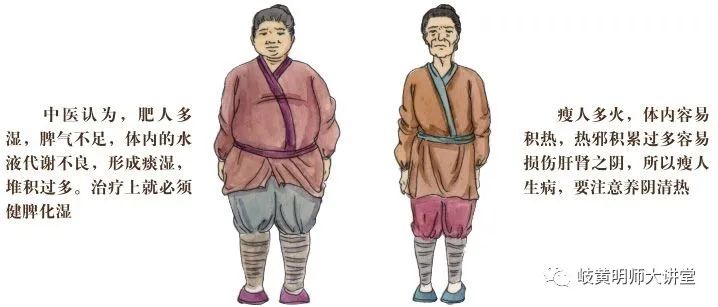
● Obesity and thinness reflect different physical conditions.
 Local Observation
Local Observation
 Local observation refers to diagnosing by examining the local conditions of the body surface to understand the illness, including observing the head and face, five sense organs, skin, limbs, pediatric fingerprints, and excretions. 1. Measles, Rubella, and Hidden Rashes
Local observation refers to diagnosing by examining the local conditions of the body surface to understand the illness, including observing the head and face, five sense organs, skin, limbs, pediatric fingerprints, and excretions. 1. Measles, Rubella, and Hidden Rashes

2. Observation of Excretions(1) Observing phlegm and saliva

(2) Observing vomit

(3) Observing stool

(4) Observing urine

Local observation includes observing the head and face, five sense organs, skin, limbs, pediatric fingerprints, and excretions.
Next Issue: Observing the Tongue

-
The key to TCM diagnosis is to learn to differentiate syndromes. Are you familiar with the characteristics of TCM “syndromes”?
-
Methods of syndrome differentiation in TCM
-
Characteristics of syndrome differentiation in TCM
Video on Basic TCM Theory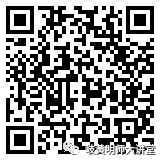
▶ Note: This article is excerpted from “TCM Syndrome Differentiation and Treatment”, edited by Chen Bei. The various prescriptions and formulas mentioned are for reference and learning purposes only and should not be used as prescriptions. Please do not use them blindly; this platform does not bear any responsibility for any consequences arising from this!
Editor: Zhi Zi Proofreader: Bai Hui
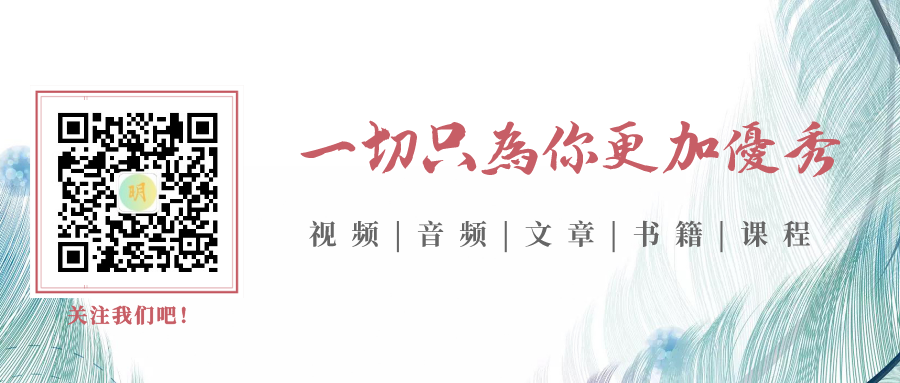
Every like and view is appreciated!

